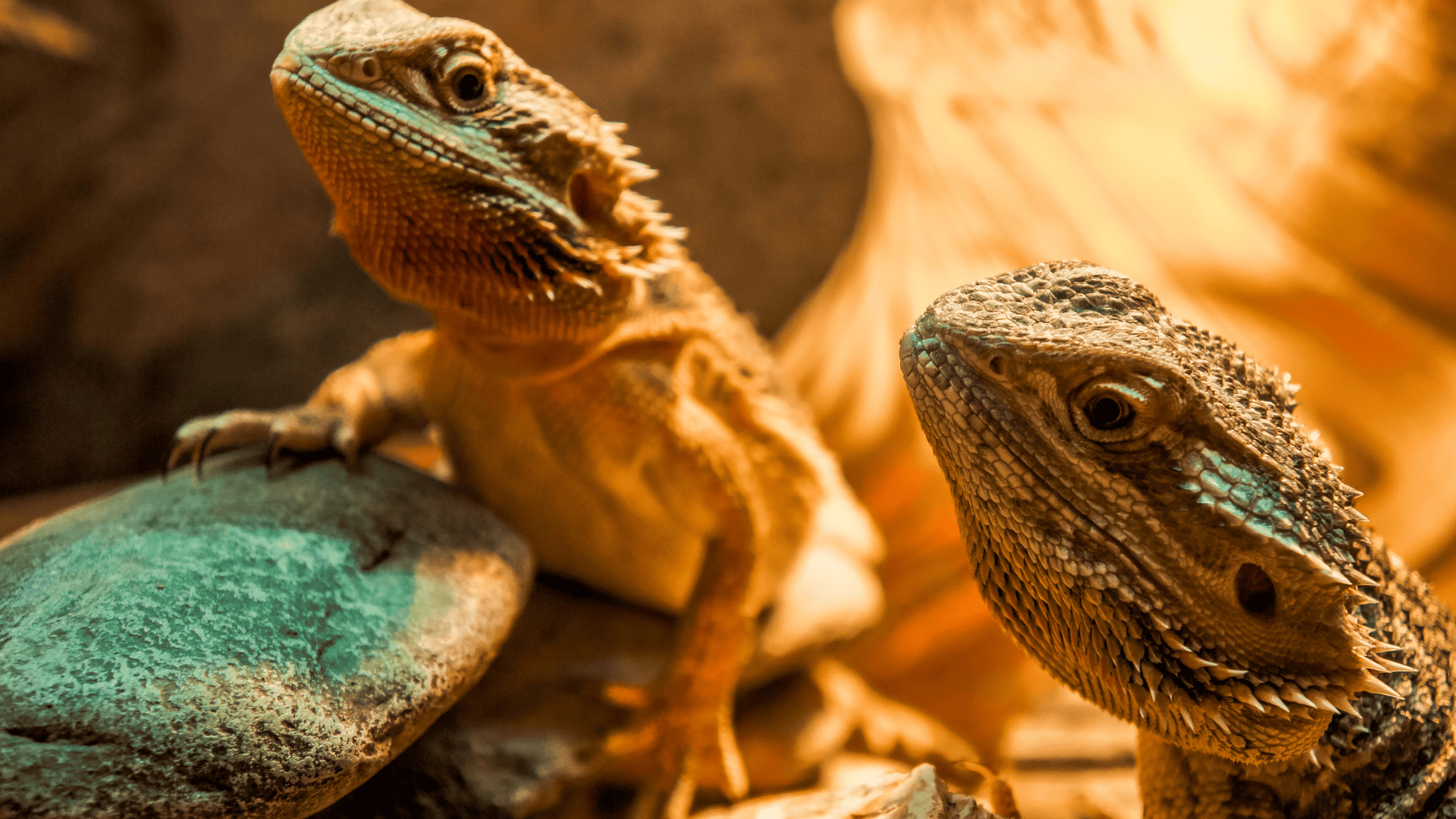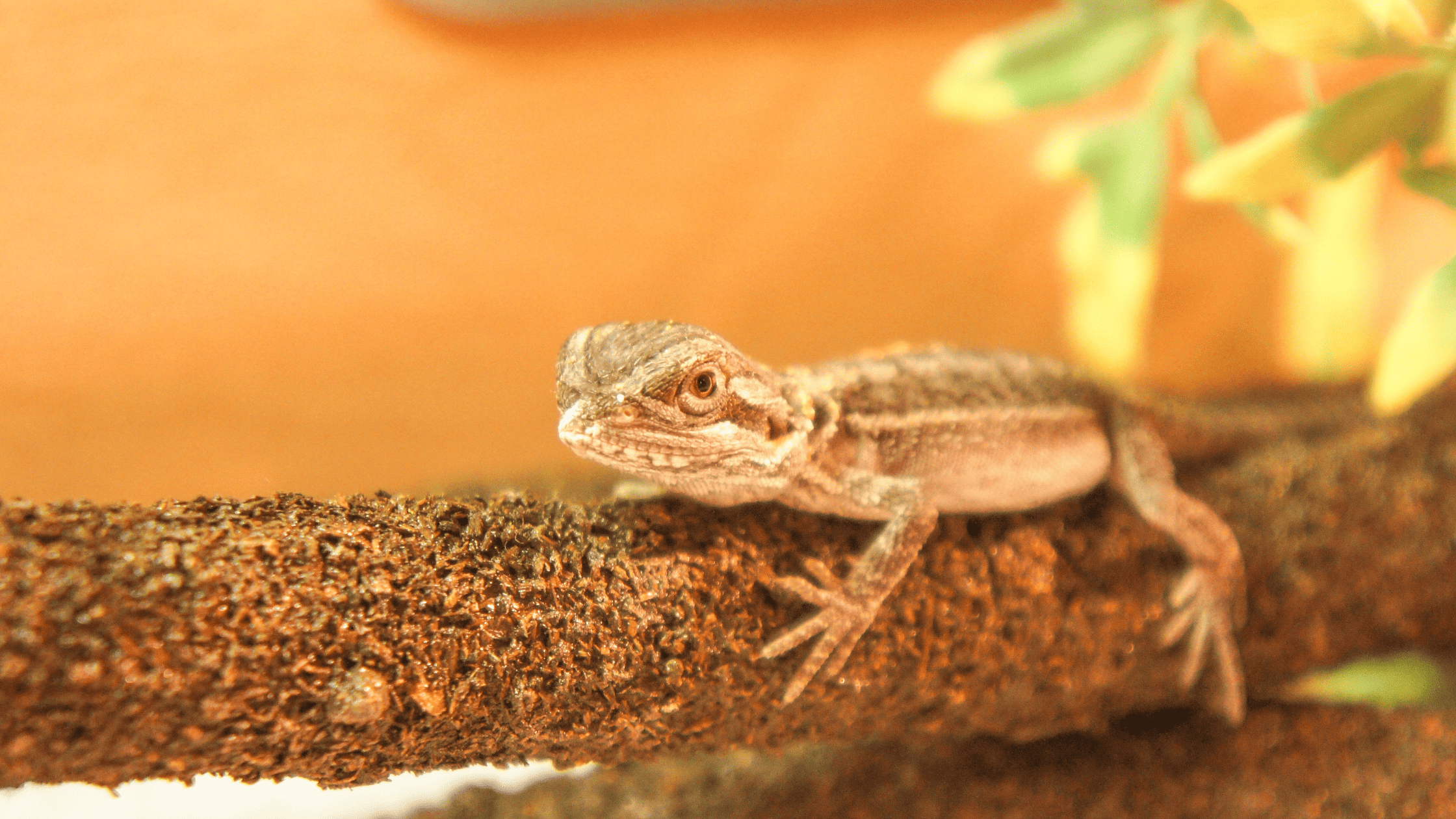If you’re a bearded dragon owner, one of the first questions you may have is whether or not your pet needs a heat lamp. After all, these lovable lizards need to stay warm in order to be healthy. The truth is, while some bearded dragons may thrive with a basking light, others may actually do better without one! In this blog post, we’ll take an in-depth look at the debate surrounding the use of heat lamps for bearded dragons and discuss when—and if—it is necessary to provide your pet with extra warmth.

Do Bearded Dragons Need a Heat Lamp?
Yes, in order to keep a bearded dragon’s habitat at an optimal temperature, it is typically necessary to provide a heat source, i.e., a heat lamp. When the temperature in the vivarium drops below 76 degrees Fahrenheit, this lamp must be turned on. In most cases, bearded dragons must be kept under a heat lamp for 12 to 18 hours daily.
Beginners may find it hard to figure out how much light and heat a bearded dragon needs, which is understandable. Choosing the improper fixture might impair your bearded dragon’s health.
This article will tell you all you need to know about how much heat a bearded dragon needs.
What are Heat Lamps?
Heat lamps are light bulbs that give off both light and heat. They are available in various forms, which can be used for multiple purposes and wattages. You may get ceramic heat emitters, vapour bulbs, and heat lamps for your bearded dragon, supplying it with the necessary amount of heat to keep it healthy.
The majority of the time, heat lamps are placed in the locations where beardies like to sunbathe. During the day, here is where they will rest and either perch or lay. They do this so they may also be exposed to UV radiation and heat. Since this is how bearded dragons act in the wild, it’s only natural to let your pet bask in your home.
The wattage of the light bulb that you will put in the heat lamp will be determined by the environment in which it will be kept. If you have a terrarium that is 50 gallons in size, you will need a bulb with a lower wattage than if you have a 100-gallon terrarium. To maintain the same temperature inside the terrarium, the heater’s wattage will need to be increased.
Do Bearded Dragons Need Heat Lamp To Sleep?
Bearded Dragons need a heat lamp to keep them warm at night, but only when the temperature dips below 76 degrees Fahrenheit. During the day, it will be pretty warm, but at night, the temperature will drop to about 70-76°F.
If the temperature in the room is already this high or close to it, then you do not need to purchase any more heaters to keep your beardie warm. On the other hand, if the temperature falls below the range of 70 to 76 degrees Fahrenheit, you might want to acquire a ceramic heat emitter.
A ceramic heater will produce no light while still providing sufficient heat to maintain the tank’s temperature at a constant level.
How to Use a Heat Lamp at Night for a Bearded Dragon?
At night, you might also require the use of a heat lamp. This is to ensure the temperature doesn’t fall below 76 degrees Fahrenheit. The great news is that you can find nighttime heat bulbs in stores, and these bulbs produce a lesser degree of light. Because of this, your bearded dragon can maintain a comfortable temperature without being bothered by any light.
Night-time heat bulbs are often sold in shades of red or dark blue and may be purchased at pet stores as well as online. These bulbs’ wattage can range from 15 to 75, depending on the specific model. Because your bearded dragon cannot see the light emitted by these bulbs, you won’t have to worry about the bearded dragon being scared by it.
If you use a lamp that simulates daylight at night, please do not do so since it will prevent your dragon from having a restful sleep.

What Happens If a Beardies Gets Cold?
Many bad things can happen if you don’t keep your beardie warm. The first sign is that your pet will become tired and have a diminished appetite or none. This is because inadequate illumination for bearded dragons causes a slowdown in the bearded dragon’s metabolism.
If a bearded dragon gets too cold, they can become sluggish and stop eating. In extreme cases, dragons can get pneumonia and die. To avoid this, always make sure your dragon has a warm basking spot and the temperature in their tank does not drop below 70 degrees Fahrenheit.
In addition, make sure to provide your dragon with a cool side of their tank to create a temperature gradient. This will allow them to regulate their body temperature and stay comfortable.
What About Under Tank Heat Pads?
Bearded dragons require a steady supply of moderate heat, which may be provided with under-tank heating pads. In addition to the heat lamps, these cushions may be placed below the terrarium to provide additional warmth.
Heat pads are perfect for warming the layer underneath and giving your bearded dragon a little more warmth. Heat pads are beneficial, not just in the winter but also in other cold seasons.
If you need a heating pad under the tank, you’ll have to ensure it fits the terrarium. This is because heat pads of an insufficient size will not provide sufficient heat. You may want more than one heat pad if you have a huge terrarium. In addition, you will want an adequate number of power outlets into which the heating pads may be plugged.
Heat Tape
Heat tapes, also referred to as “heat cables,” can heat particular habitat regions. Wrapping tape over the terrarium’s larger rocks is one option. Tape is another option that might be used to cover the perch. When it is sunbathing, this will offer additional heat for your bearded dragon.
Heat tapes should only be used when needed. If you use an excessive amount of heat tape, you run the risk of the terrarium becoming overheated. This might cause burns.
Ceramic Lamp
A ceramic lamp is excellent for heating at night because it doesn’t give off light and won’t mess up your bearded dragon’s natural sleeping schedule.
You can get a lot of great ceramic lamps at great prices. Make sure it is connected to a thermostat so it will only turn on when the temperature falls below 18 degrees Celsius.
Infrared Nighttime Bulb
A bulb that emits infrared light is yet another suitable option. The illumination from this bulb won’t disturb your bearded dragon’s sleep. Just remember that a ceramic lamp will last longer than an infrared bulb.
Using Thermometers
You should use a thermometer in the warmer parts of the terrarium, such as the basking area (where beardies sleep/take naps). This will let you always keep an eye on the temperatures. You can get good results with digital thermometers, but if you like, you may also use an analogue thermometer. Whatever type you pick, make it function properly, and check the heat frequently.
Putting thermometers in different places in the terrarium lets you control the heat. Your bearded dragon will be pleased and in good health, if the temperature in its terrarium is maintained within the appropriate range.
Do Bearded Dragons Always Require Heat?
Your bearded dragon’s vivarium should have the same heat and light cycle as the wilds, where the temperature drops at night. Because of this, your bearded dragon requires a soothing effect at night. This allows you to switch off your heat light when you get ready for bed.
What Temperatures Are Unacceptable for a Bearded Dragon?
In order for a bearded dragon to effectively digest the food it eats, the temperature of its habitat should be maintained at a level between 100 and 110 degrees Fahrenheit. If the environment’s temperature is too high, the beardie will not be able to digest its food properly and will have other adverse effects on its health.
